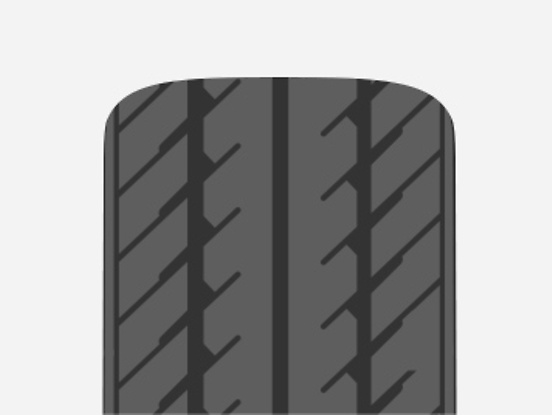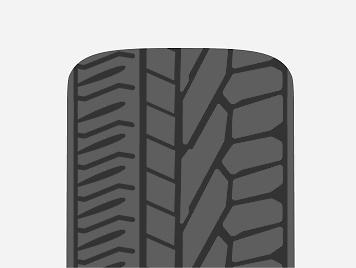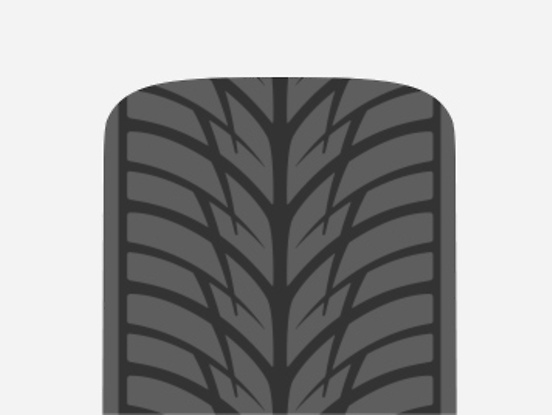Tyre Patterns & Types
A solution for every requirement

Symmetrical Tyres
Symmetric tyres can be fitted and rotated in either direction as both halves of the tread pattern are identical. They are particularly quiet and provide good road holding. Their lower rolling resistance reduces fuel consumption and extends the lifetime of the tyres.

Asymmetric Tyres
As car performance increases, tyre design has to keep pace and asymmetric patterns are becoming more common. The pattern is different either side of the centre line and tends to be more dense towards the inner edge. This leads to a better compromise between wet and dry handling.

Directional Tyres
A fashion originally developed for high performance cars is the directional pattern which provides optimum straight line stability and lower pattern noise generation. These patterns must be fitted the correct way round on the wheel and also the position on the vehicle to ensure the correct direction of rotation is achieved.
Specialist Tyre Types

Run Flat tyres
Run flats have either a reinforced sidewall or additional internal structure to provide partial support to the tyre in a deflated condition.
The driver may not be able to tell that a puncture has happened, particularly if driving on the motorway. For this reason run-flat tyres will always be fitted together with a tyre pressure monitoring system (TPMS).

Noise Reducing Technologies
Noise is a thing that all tyres suffer from, and one of the main features that big tyre manufacturers are innovating. The main goal is to reduce the noise from the car’s interior and produce a smooth ride. This can be achieved by various different types of foam fitted on the inside of the tyre.

Self Sealing tyres
Self-sealing tyres were designed in such a way that they are able to support your car even after the tyre has lost all of its air pressure, thereby allowing you to make it safely to your nearest garage or even all the way back home.
